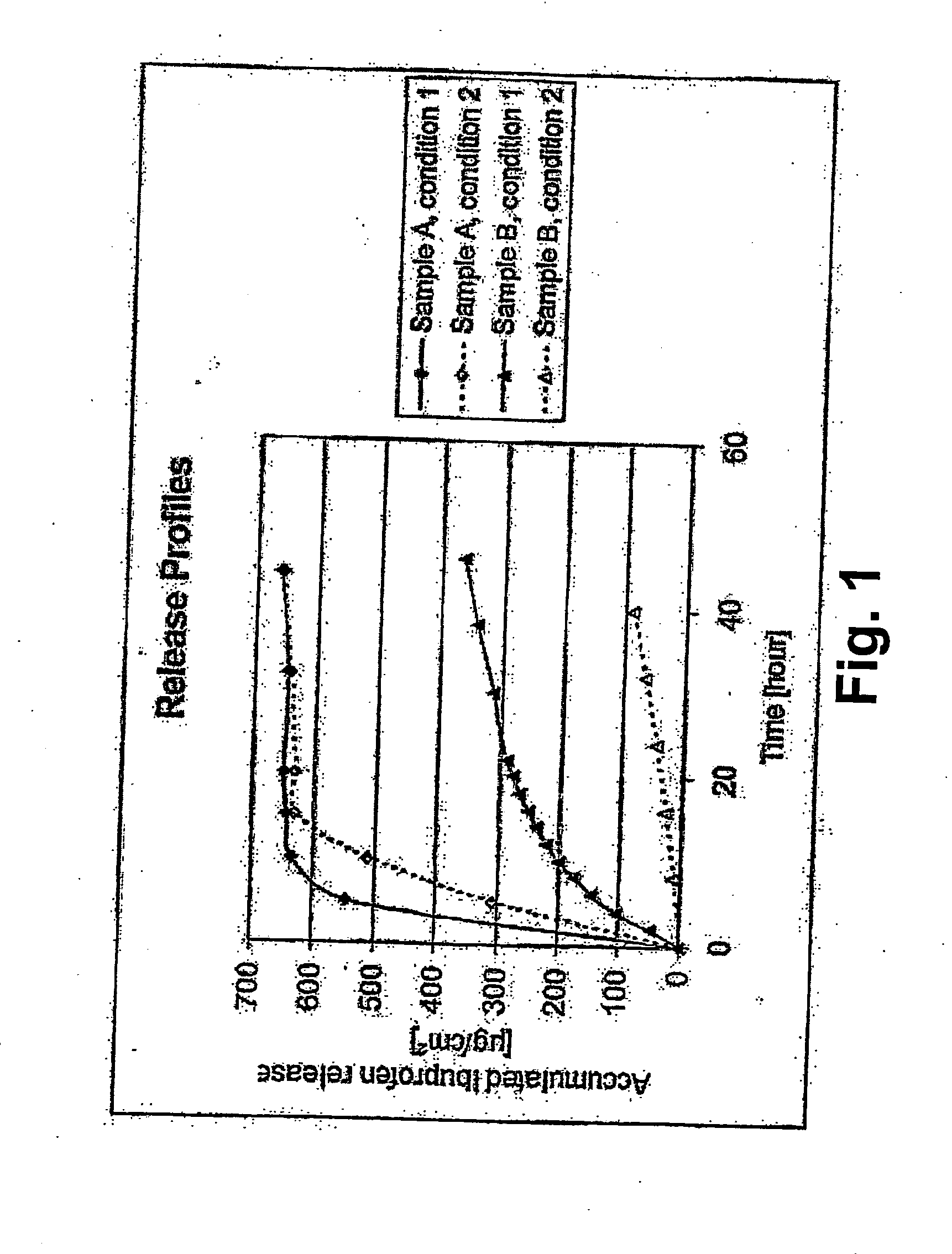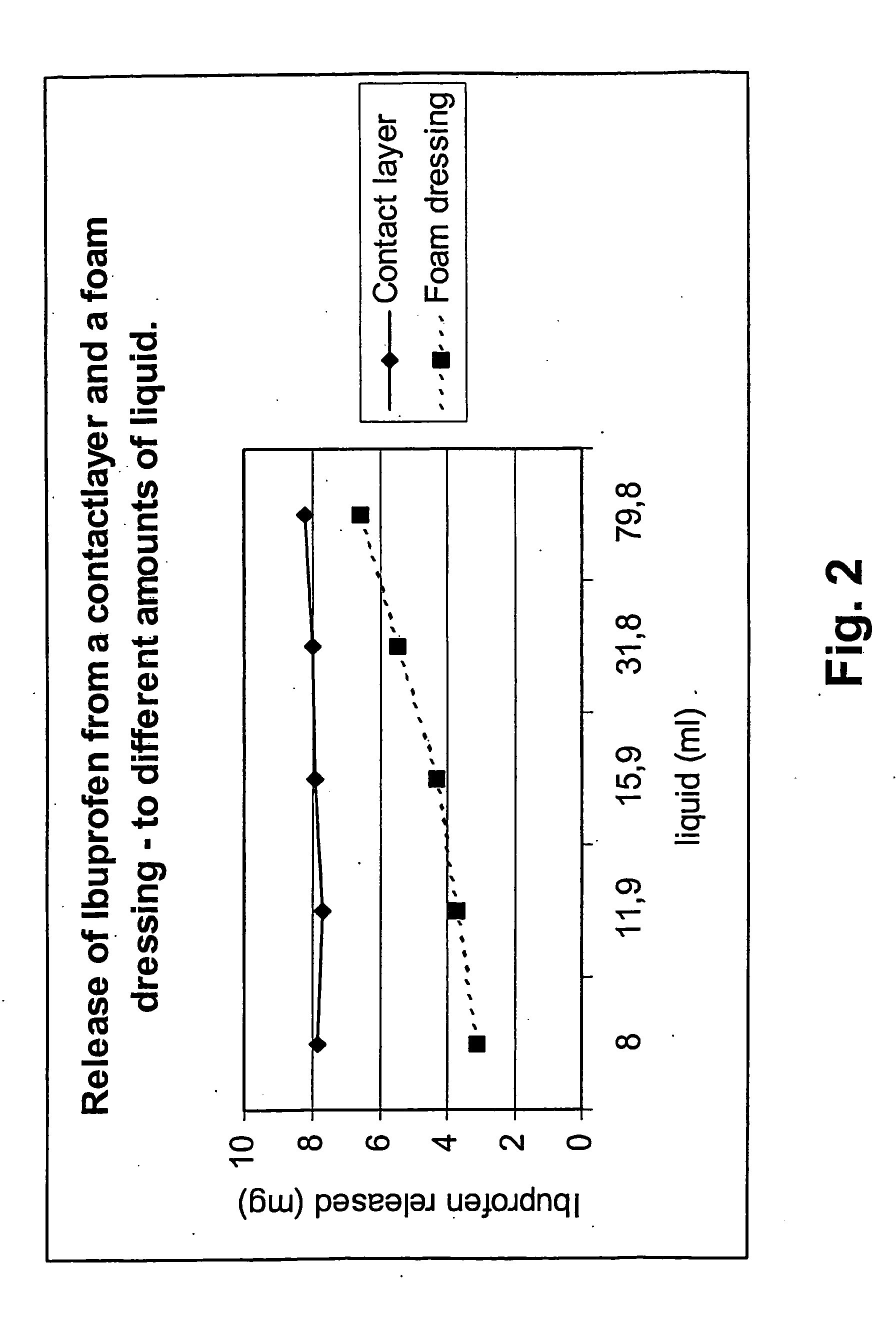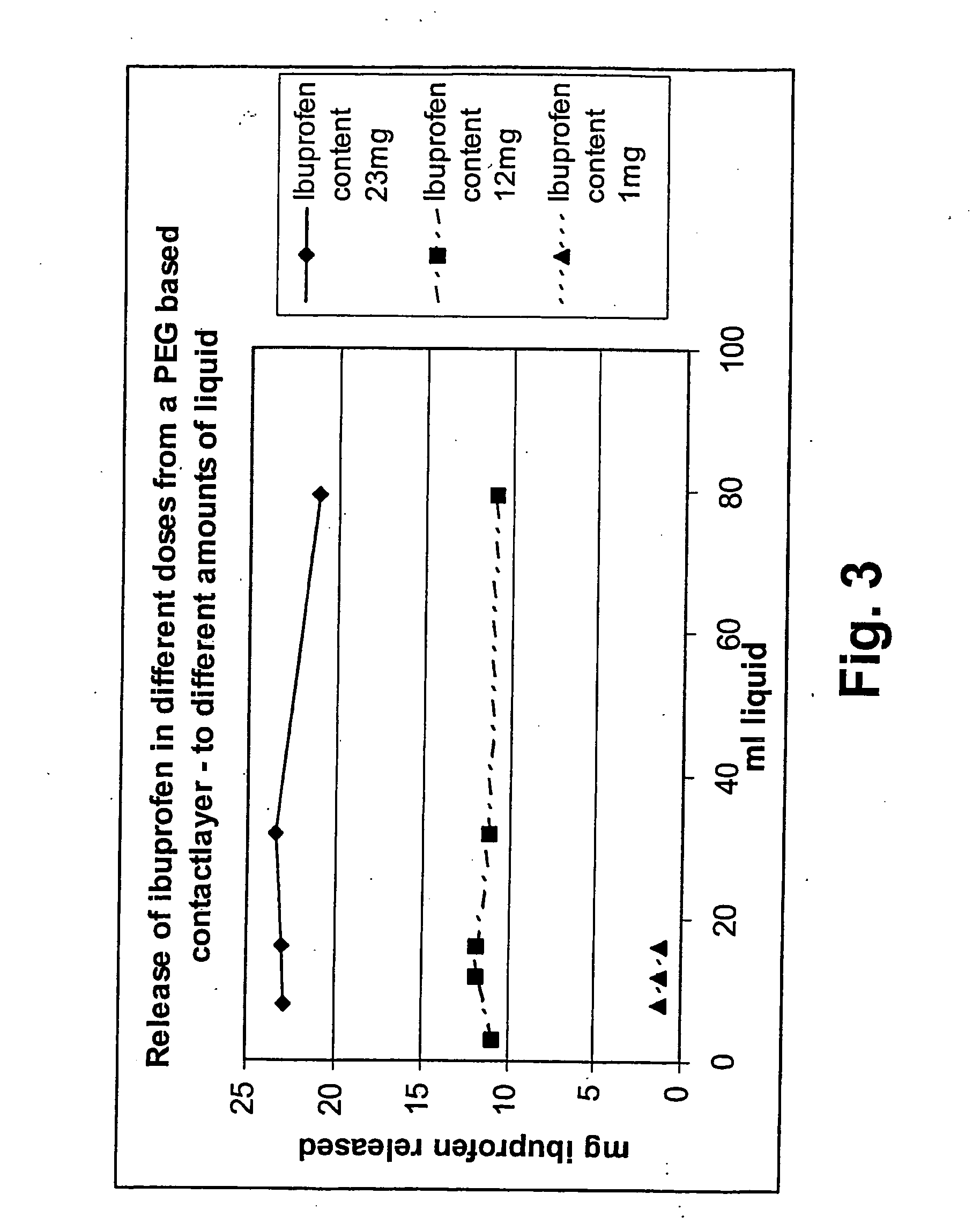Wound care device
- Summary
- Abstract
- Description
- Claims
- Application Information
AI Technical Summary
Benefits of technology
Problems solved by technology
Method used
Image
Examples
example 1
[0109] Two samples were prepared and tested as described below.
Sample A
Preparation of a Wound-Contacting Layer
[0110] A mixture consisting of:
Ibuprofen2.5% w / wCarboxymethyl cellulose 15% w / wVaseline82.5% w / w
[0111] Mixture was heated to 60° C. and mixed with an Ultra Turrax™ equipment for 10 minutes at 16000 rpm. The mixture was then applied and impregnated onto a simple net in the form of a polyester gauze. The resulting contact layer has a mean Ibuprofen concentration of approximately 0.5 mg / cm2.
Sample B
Preparation of a Foam Dressing
[0112] A polyurethane foam was prepared in the following way:
[0113] 100 parts w / w Hypol2002 (Dow Chemical Company)
[0114] 1 part w / w Pluronic 62 (BASF)
[0115] 100 parts w / w water
[0116] 1 part w / w Ibuprofen
[0117] The materials components were mixed together for approximately 15 seconds. The liquid was poured into a mould and allowed to react for 10 minutes. The resulting foam sheet was dried in an oven at 70° C. for 30 minutes, and then cu...
example 2
[0124] A wound-contacting layer comprising a net impregnated with an active substance in Vaseline or PEG base was used for the study. The drug content in each contact layer was 0.05, 0.5 mg or 1 mg drug / cm2 respectively. The contact layers were prepared as shown below.
[0125] The contact layers were prepared by mixing 85 g Vaseline with 15 g CMC. Ibuprofen was added in different amounts. The mixture was then applied to a polyester net in an amount of approximately 0.02-0.03 g / cm2.
PEG Contact Layer
[0126] By mixing 60 g low viscosity PEG with 40 g high viscosity PEG and different amounts of ibuprofen PEG contact layers were made. Ibuprofen was added in different amounts. The mixture was then applied a polyester net in an amount of approximately 0.02-0.03 g / cm2.
Method
[0127] The dressings were cut into circles with a diameter of 4.5 cm and were put into measurement cups with a diameter of 5.5 cm—on a vibrating table. Different amounts of release media (USP ...
PUM
 Login to View More
Login to View More Abstract
Description
Claims
Application Information
 Login to View More
Login to View More - R&D
- Intellectual Property
- Life Sciences
- Materials
- Tech Scout
- Unparalleled Data Quality
- Higher Quality Content
- 60% Fewer Hallucinations
Browse by: Latest US Patents, China's latest patents, Technical Efficacy Thesaurus, Application Domain, Technology Topic, Popular Technical Reports.
© 2025 PatSnap. All rights reserved.Legal|Privacy policy|Modern Slavery Act Transparency Statement|Sitemap|About US| Contact US: help@patsnap.com



